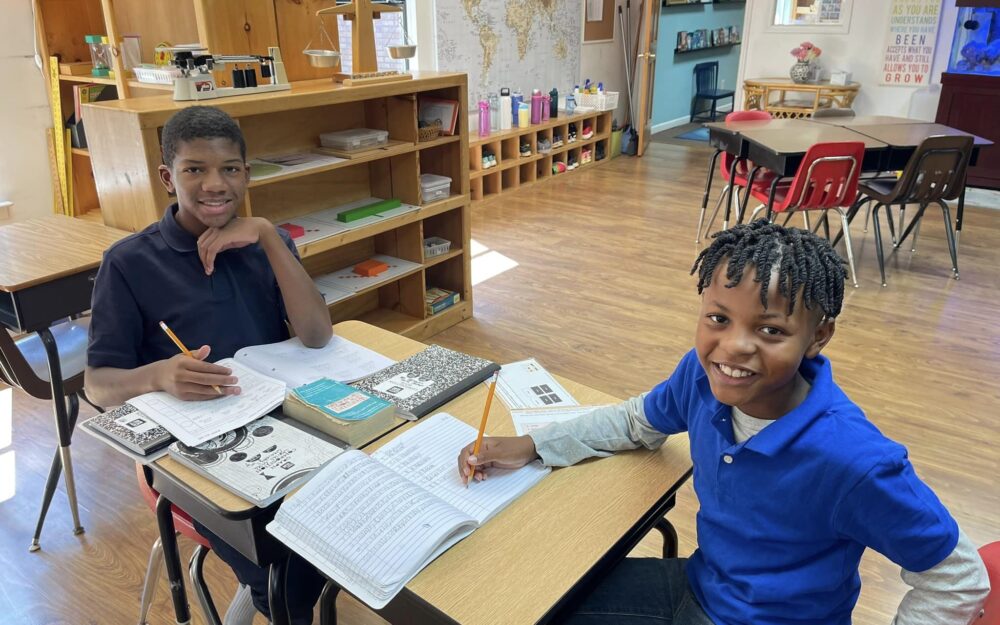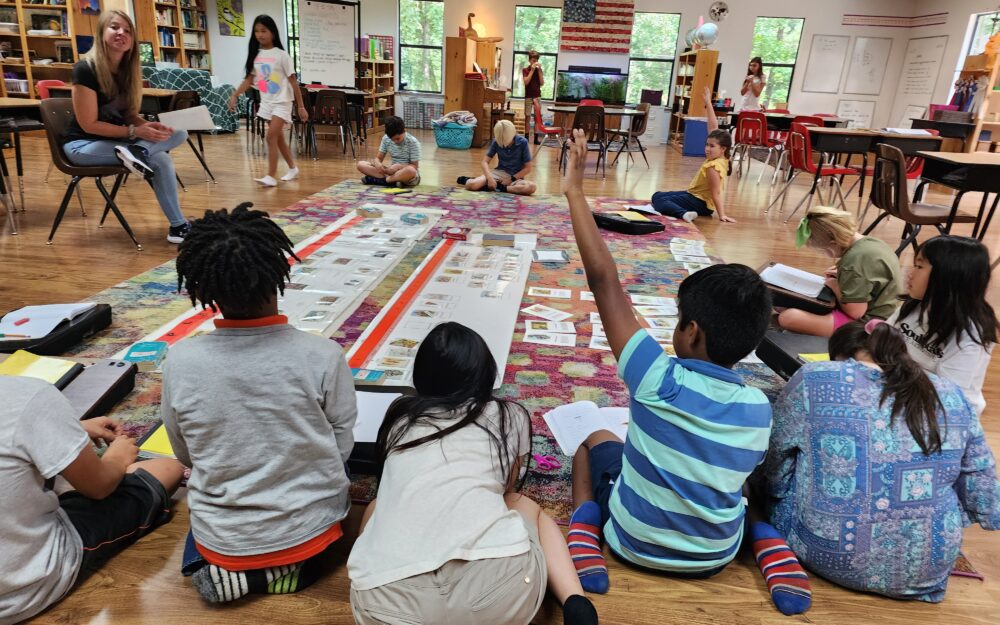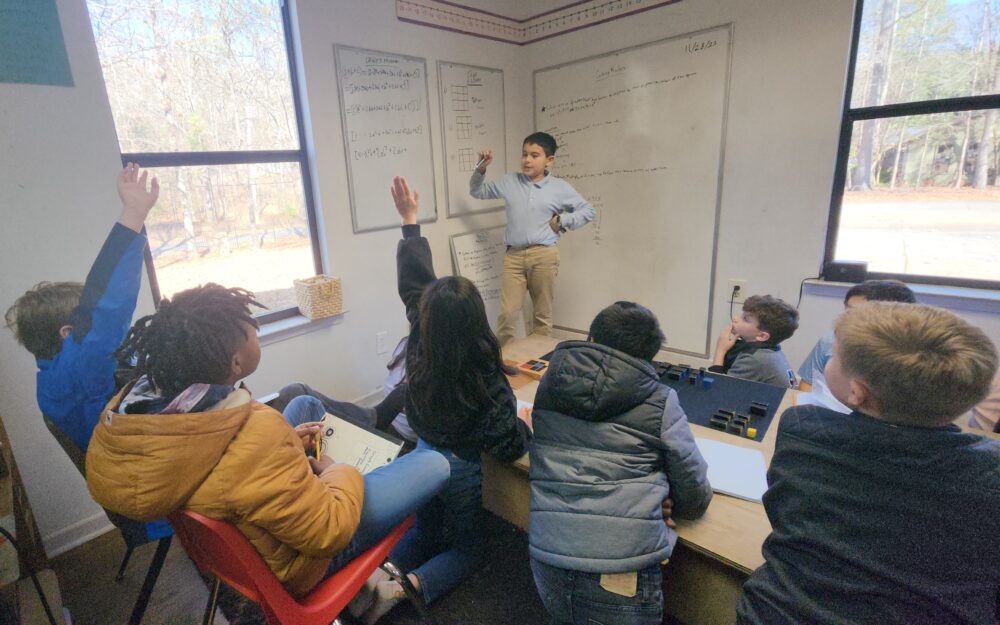Elementary
“We seek to sow life in the child rather than theories, to help him in his growth, mental and emotional as well as physical. And for that we must offer grand and lofty ideas to the human mind.”
-Maria Montessori
The goal of an elementary classroom is to develop the child’s growing abilities to think abstractly and to think with imagination. The environment also fosters the growing social skills of the child. The elementary classroom builds on the experience of the primary classroom while reflecting a new stage of development, and offers the following:
- An integration of the arts, sciences, geography, history, and language that evokes the imagination and abstraction of the elementary child.
- The presentation of knowledge as a part of a large scale narrative which unfolds the origins of the earth, of life, of human communities (agricultural and urban), of empires, and of modem history, always in the context of the inter-relatedness of life.
- The presentation of the formal scientific language of zoology, botany, anthropology, geography, geology, etc., in order to expose the child to accurate, organized information which reflects the child’s intelligence and interests.
Spiraling Curriculum
The same basic areas of learning that were present in the primary classroom (practical life, sensorial, language, math, and cultural) are present in the elementary classroom, but are expanded and adapted to correspond to the developmental abilities of the child, and to his expanding knowledge. For example, the practical life exercises are now important as the child takes an important role in the maintaining the physical space he works in and in maintaining a community.
Active, Concrete Learning
While the primary child was said by Montessori to have an “absorbent mind”, the elementary child’s learning process is driven by his “rational mind”. The classroom virtually hums with activity as children learn by developing questions, and discovering the answers to those questions. The teachers make frequent use of time lines, picture charts, and other visual aids to provide a linguistic and visual overview of the first principles of zoology, anthropology, geography, and geology. The math curriculum is presented with concrete materials, which simultaneously reveal the arithmetic, geometric, and algebraic concepts. Language is taught through further use of special materials, but also through the study of literature. Science concepts are explored through demonstrations and experimentation.
Integrated Curriculum
Montessori trained teachers are able to integrate the teaching of all subjects, not just isolated disciplines, as a part of a whole intellectual tradition. The emphasis on open ended research and in depth study using primary and secondary sources (books) as well as other materials, including the use of community resources that extend beyond the four walls of the classroom.
“ If the idea of the universe is presented to the child in the right way, it will do more for him than just arouse his interest. It will create admiration and wonder, a feeling loftier than interest, and far more satisfying.”
-Maria Montessori
Hands-On Experiences
Montessori, through her observations of children, outlined a beautiful elementary program filled with hands-on experiences. These key experiences intensify learning with interactive timelines, stories, and symbols from antiquity. The plethora of materials is steeped in historical imagery so students understand how all living and non-living things on our planet are interrelated and interdependent. These symbols are integrated throughout the curriculum, and weave a web of unity. The student becomes aware of the relationship between study areas and how all things are connected.
Adapted from the website www.MontessoriConnections.com. Used with permission.









